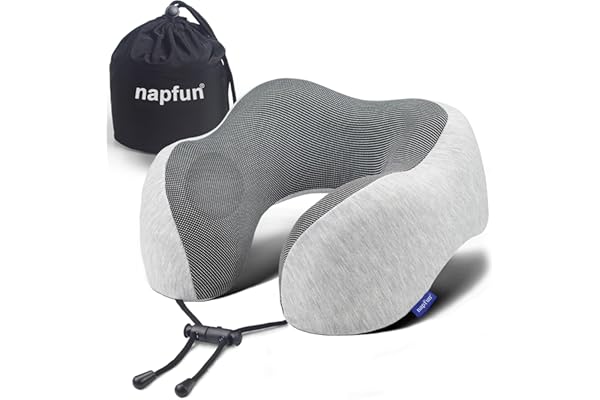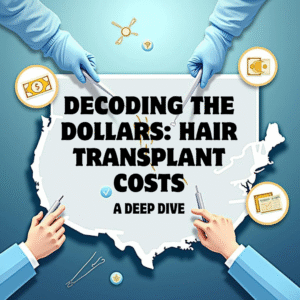Decoding the Dollars: A Deep Dive into Hair Transplant Cost Per Graft in the USA
Hair loss can be a deeply personal and often frustrating journey. For many, it impacts confidence and self-image. The good news is that modern medicine offers a powerful, permanent solution: the hair transplant. But as you begin your research, one question inevitably looms largest: “What is this actually going to cost me?”
You’ve likely seen the term “cost per graft” thrown around, but what does it mean? In the United States, pricing can feel as varied as the landscape itself. This comprehensive guide is designed to demystify the numbers, break down the factors that influence the price, and empower you with the knowledge to make an informed decision. We’re going beyond the surface to give you a true understanding of the investment you’re considering.
Key Takeaways: Quick Answers
- Average Cost Per Graft: In the USA, the cost per graft for a hair transplant typically ranges from $4 to $12.
- Procedure Type Matters: FUE (Follicular Unit Extraction) is generally more expensive per graft ($6 – $12) than FUT (Follicular Unit Transplantation) ($4 – $8) due to its labor-intensive nature.
- Location is a Major Factor: Clinics in major metropolitan areas like New York or Los Angeles often have higher overhead and charge more than clinics in smaller cities.
- Total Cost Equation: The final price is a simple calculation: (Number of Grafts Needed) x (Cost Per Graft) + (Clinic Fees). A typical procedure can range from $5,000 to over $25,000.
- Quality Over Price: Choosing a surgeon based on experience and results, not just the lowest price, is critical for a successful and natural-looking outcome.
First, What Exactly Is a ‘Graft’?
Before we can talk about cost, it’s crucial to understand what you’re paying for. A “graft” is not a single hair. A hair graft, or follicular unit, is a tiny, naturally occurring bundle of hair follicles. These units can contain anywhere from one to four (and occasionally, five) individual hairs.
Think of it like planting small plugs of grass. Each plug contains multiple blades. When a surgeon quotes you a price “per graft,” they are referring to the cost of extracting one of these follicular units from a donor area (usually the back of your head) and transplanting it to a thinning or bald area.
Understanding this is key because a 2,000-graft procedure might result in 4,000 to 6,000 new hairs, significantly impacting the final density and appearance.
The Big Question: What is the Average Hair Transplant Cost Per Graft in the USA?
Alright, let’s get to the heart of the matter. While there’s no single, fixed price, we can establish a reliable range. After analyzing data from clinics across the United States, the average cost per graft for a hair transplant falls somewhere between $4.00 and $12.00.
Why such a wide range? This isn’t like buying a product off a shelf. The price is influenced by a multitude of dynamic factors. Below is a table illustrating how the total cost can scale based on the number of grafts and the per-graft price point.
| Number of Grafts | Low-End Estimate ($5/graft) | High-End Estimate ($10/graft) |
|---|---|---|
| 500 Grafts (Minor hairline touch-up) | $2,500 | $5,000 |
| 1,000 Grafts (Receding hairline) | $5,000 | $10,000 |
| 1,500 Grafts (Hairline and temples) | $7,500 | $15,000 |
| 2,000 Grafts (Significant balding at crown/front) | $10,000 | $20,000 |
| 2,500+ Grafts (Extensive coverage) | $12,500+ | $25,000+ |
Key Factors That Influence Your Final Cost
The price per graft is not arbitrary. It’s calculated based on several critical components. Understanding these will help you see why one clinic might charge $6 per graft while another, more renowned clinic charges $11.
1. Geographic Location (The Real Estate Factor)
A clinic in Beverly Hills, California, or Manhattan, New York, will have significantly higher operating costs (rent, salaries, taxes) than a clinic in Omaha, Nebraska. These costs are inevitably passed on to the patient. It’s not uncommon to see a 20-30% price difference for the exact same procedure based solely on the city where it’s performed.
2. The Surgeon’s Expertise and Clinic’s Reputation
This is arguably the most important factor. You are not just paying for hair; you are paying for the skill, experience, and artistry of the surgeon and their team. A board-certified surgeon with a decade of experience, a portfolio of excellent results, and specialized training will command a higher fee. This premium pays for a lower risk of complications, a more natural-looking hairline design, and higher graft survival rates. Remember, a botched hair transplant is far more costly to fix than getting it right the first time.
3. Type of Procedure: FUE vs. FUT
The technique used for extraction is a major cost driver. The two gold-standard methods are FUE and FUT.
- FUT (Follicular Unit Transplantation): Also known as the “strip method,” this involves removing a small strip of tissue from the donor area. Technicians then dissect this strip under microscopes to isolate individual follicular units. It’s faster for the surgeon and typically yields a high number of quality grafts, making it less expensive per graft (usually in the $4 to $8 range). The downside is a linear scar on the back of the head.
- FUE (Follicular Unit Extraction): This technique involves extracting each follicular unit one by one directly from the scalp using a tiny punch tool. It is meticulous, time-consuming, and requires immense precision. As a result, it’s more expensive per graft (usually in the $6 to $12 range). The primary benefit is that it leaves no linear scar, only tiny dot-like scars that are virtually invisible, allowing patients to wear their hair very short.
FUE (Follicular Unit Extraction)
- No linear scar; ideal for short hairstyles.
- Less invasive procedure.
- Quicker recovery time with less discomfort.
- Can be used to harvest hair from other body parts.
FUT (Follicular Unit Transplantation)
- Leaves a permanent linear scar in the donor area.
- Slightly longer recovery period.
- Can feel more invasive for the patient.
- Not suitable if you plan to shave your head.
4. The Number of Grafts You Need
This is straightforward: the more extensive your hair loss, the more grafts you’ll need to achieve the desired density, and the higher the total cost will be. During your consultation, a surgeon will assess your level of hair loss using the Norwood scale and discuss your goals to determine the right number of grafts for you.
Beyond the Per-Graft Price: Hidden Costs to Consider
When you receive a quote, it’s vital to ask for a complete breakdown. The “per graft” price might not be the final number. Be sure to inquire about:
- Consultation Fees: Some clinics charge for the initial consultation, though many will apply this fee toward the final procedure cost.
- Anesthesiologist Fees: For larger sessions, sedation may be used, which involves a separate cost.
- Facility Fees: The cost of using the surgical suite.
- Post-Operative Supplies: This includes medications (painkillers, antibiotics), special shampoos, and items like a spray bottle for keeping grafts moist.
- Follow-Up Appointments: Confirm whether post-op check-ins are included in the price.
A trustworthy clinic will be transparent about all potential costs upfront, leaving no room for surprise bills.
Post-Transplant Care: Protecting Your Investment
Your journey doesn’t end when you leave the clinic. The first two weeks are critical for graft survival. Proper aftercare ensures you get the best possible result from your investment. This involves gentle cleaning, avoiding strenuous activity, and protecting your scalp from the sun. Establishing a solid care plan is as crucial as a good morning routine; consistency is key to success.
During this recovery period, managing stress is also surprisingly important for healing. Finding ways to relax can be beneficial. While it might seem unrelated, focusing on overall wellness, perhaps even using relaxation tools like a shiatsu foot massager to de-stress in the evenings, contributes to a healthier, more relaxed state that can support your body’s recovery process.
Here are some highly-rated products from Amazon that can be essential during your recovery phase:

Sulfate-Free Shampoo
A gentle, non-irritating shampoo is a must. Sulfates can be harsh on new grafts. Look for formulas with ingredients like biotin and ketoconazole.
View on Amazon
Silk or Satin Pillowcase
Reduces friction on your new grafts while you sleep, preventing them from being accidentally dislodged. It’s a small change that makes a big difference.
View on Amazon
Travel Neck Pillow
You’ll need to sleep with your head elevated for the first few nights. A supportive U-shaped travel pillow helps you stay comfortable in the right position.
View on AmazonFrequently Asked Questions (FAQ)
Is financing available for hair transplants?
Yes, absolutely. Since hair transplants are considered cosmetic and not typically covered by insurance, most reputable clinics offer financing options through third-party medical credit companies like CareCredit or Prosper. They may also have in-house payment plans. Always ask about these options during your consultation.
How many grafts will I need?
This is highly individual. A person with minor thinning at the temples might only need 800-1,200 grafts. Someone with significant balding across the crown and front could require 2,500 grafts or more, sometimes over multiple sessions. Only an in-person consultation with an expert can give you a precise number.
Are cheaper, overseas options like Turkey worth considering?
Medical tourism for hair transplants is popular due to lower costs. However, it comes with significant risks. These can include a lack of regulation, potential for non-physicians performing the surgery, difficulty with legal recourse if something goes wrong, and challenges with post-operative care once you’ve returned to the U.S. While many have good experiences, the risk of a poor outcome is considerably higher.
Does the price per graft decrease with a larger procedure?
Often, yes. Many clinics offer a sliding scale where the cost per graft is lower for larger sessions. For example, the first 1,000 grafts might be $9 each, but any additional grafts after that might be priced at $7 each. This incentivizes getting the necessary work done in a single, efficient session.
Conclusion: It’s An Investment In Yourself
The cost per graft for a hair transplant in the USA is a significant financial consideration, but it’s essential to view it not as a cost, but as a long-term investment in your confidence and well-being. The price reflects a surgeon’s decade of training, the skill of a highly-trained technical team, and the advanced technology required to create a result that is both permanent and undetectable.
Your focus should be on finding a surgeon whose results you admire and whose ethics you trust. Arm yourself with questions, seek multiple consultations, and choose a clinic that prioritizes your safety and aesthetic goals above all else. The right procedure from the right professional is a priceless investment that pays dividends in self-esteem for years to come.
Disclaimer: The information provided in this article is for educational purposes only and should not be considered medical advice. Hair transplant costs are subject to change and vary significantly based on the factors discussed. The Amazon links included are sponsored. Always consult with a qualified, board-certified medical professional for a personal evaluation and cost estimate. Individual results may vary.


